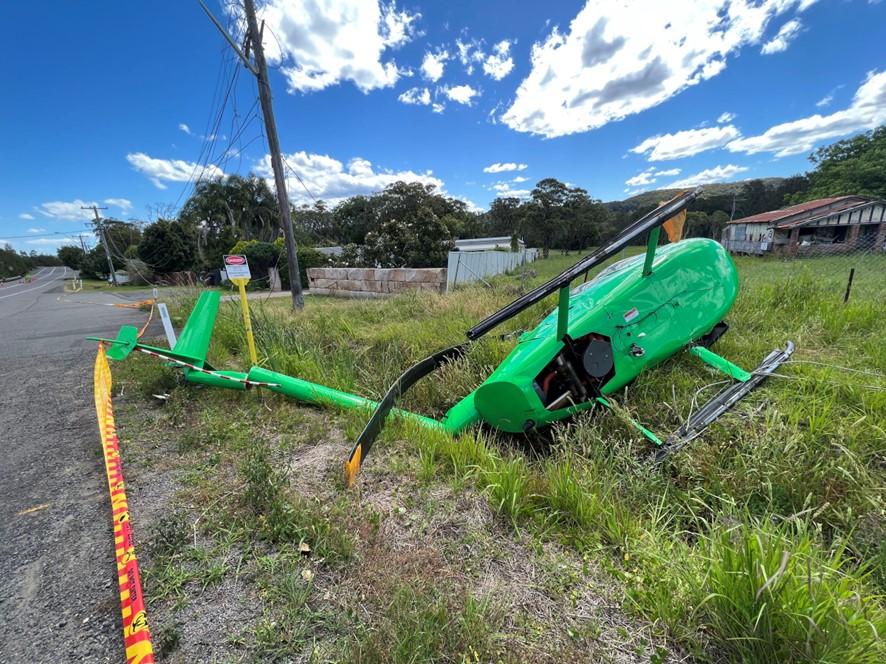
A NSW Central Coast helicopter accident highlights to pilots the need to be cognisant of factors that can induce unanticipated yaw, according to an Australian Transport Safety Bureau investigation report.
On 19 November 2022, the pilot of a Robinson R44 was conducting a private flight with two passengers to a function centre at Forresters Beach from a nearby property.
During the approach to the planned landing site, a carpark beside the venue, the pilot reported experiencing an uncommanded yaw to the right, which was unable to be recovered.
“During the approach to the confined carpark landing site, the helicopter experienced an unanticipated yaw to the right,” ATSB Director Transport Safety Stuart Macleod said.
“The pilot’s response was ineffective at recovering control – however the unanticipated yaw may have occurred at a height from which control of the helicopter was not recoverable.”
The helicopter subsequently struck powerlines before impacting the ground. While the helicopter was substantially damaged, fortunately the occupants received only minor injuries.
Considering Gosford weather observations of a north-east wind at 10 kt, the approach track placed the wind from a direction and at a speed known to be conducive to the onset of unanticipated yaw, the investigation notes.
“It’s important for helicopter pilots to remain cognisant of the factors that can induce unanticipated yaw, especially the relative wind direction,” Mr Macleod said.
“These factors should be avoided, or their influence on the helicopter’s anti-torque system should be managed through positive control of the yaw rate. Depending on the yaw rate recovery may not be immediate, but maintaining the recovery control inputs is the most effective way to stop the yaw.”
Read the report: Collision with terrain involving Robinson R44, VH-TKI, at Forresters Beach, New South Wales, on 19 November 2022


